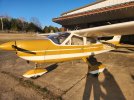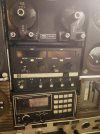I am teaching a PVT student in C177B 180HP and CS Prop. First flight went well. As CFI I have zero time in C177B. The student has time with other instructors and C172. He decided to biy this plane and I am finishing his PVT. Needs 10 hours of solo... dual and solo cross country, flight test prep. Right now I am doing pre-solo as required I do by FAR's. First flight knocked out most of requirements. He did a good job.
First the student who bought the plane says it has 220HP? I guess there was some upgrades of 180HP to 200HP.... The C177RG has 200HP. The students C177B POH is unchanged. Still researching. There was a STC for 210HP IO390 for the C177RG's in 2009. However the POH for C177B is stock 180HP version. Either he is mistaken or there must be a supplemental POH. I am going to need to see the plane logs and figure out what engine it has. 20 more HP clearly would change the POH. He may be mistaken?
Are there any weird characteristics in slip, clean and full flaps? I have to pre solo him and one is slips to landings. It is one of the last things to do. We can go to altitude and practice but just wanted to see if there is anything?
Landing seemed normal. I am letting student fly of course. This is a 1970 "B" with the 2400 series wing. It still has slotted horizontal stabilator. It was not too touchy.
The student did have some altitude holding issue in steep turns. One time I helped was steep turn back pressure. The force was a tad heavy but not bad. I might have him trim in steep turns. Personally I would rather leave it in trimmed straight and level and hold the back pressure, but it's preference. He consistently lost more than 100 feet. It's a matter of practice.
I noticed in slow flight you do get burble or aerodynamic feedback with good control. The stall horn comes on early in stalls. Never did full break as this was first flight, but will do full stalls in next flight. Again it seemed normal (different than C172).
I will learn the flying characteristics over time, but hoping some C177B pilots can give me insight. Cheers.
First the student who bought the plane says it has 220HP? I guess there was some upgrades of 180HP to 200HP.... The C177RG has 200HP. The students C177B POH is unchanged. Still researching. There was a STC for 210HP IO390 for the C177RG's in 2009. However the POH for C177B is stock 180HP version. Either he is mistaken or there must be a supplemental POH. I am going to need to see the plane logs and figure out what engine it has. 20 more HP clearly would change the POH. He may be mistaken?
Are there any weird characteristics in slip, clean and full flaps? I have to pre solo him and one is slips to landings. It is one of the last things to do. We can go to altitude and practice but just wanted to see if there is anything?
Landing seemed normal. I am letting student fly of course. This is a 1970 "B" with the 2400 series wing. It still has slotted horizontal stabilator. It was not too touchy.
The student did have some altitude holding issue in steep turns. One time I helped was steep turn back pressure. The force was a tad heavy but not bad. I might have him trim in steep turns. Personally I would rather leave it in trimmed straight and level and hold the back pressure, but it's preference. He consistently lost more than 100 feet. It's a matter of practice.
I noticed in slow flight you do get burble or aerodynamic feedback with good control. The stall horn comes on early in stalls. Never did full break as this was first flight, but will do full stalls in next flight. Again it seemed normal (different than C172).
I will learn the flying characteristics over time, but hoping some C177B pilots can give me insight. Cheers.



